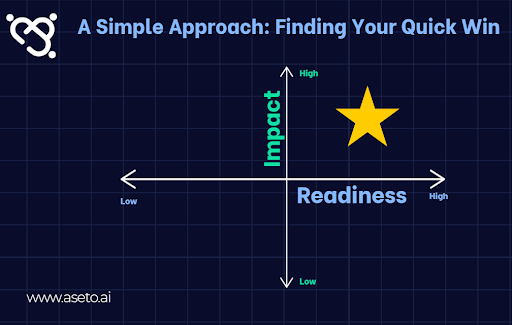The Most Common AI Mistake: Why Your Strategy Must Start with a Problem, Not a Product
In the current business landscape, the pressure to "do more with AI" is immense. Daily headlines announce new capabilities, and it’s easy to feel that if you’re not implementing AI, you’re falling behind. This pressure often leads business leaders to ask what feels like a logical question: "How can we use AI in our business?"
While it seems proactive, this is the single most common mistake we see companies make.
In our recent video, “Don’t Buy AI, Solve a Problem”, we kicked off our series on evaluating AI solutions by tackling this exact issue. The most successful AI integrations do not start with a fascination for technology; they start with a deep understanding of a business problem.
The "Solution-First" Trap
Asking "How can we use AI?" is like buying a powerful, expensive construction tool before you have decided what you want to build. You end up with a fancy new hammer, wandering through your operations looking for a nail. This "solution-first" approach usually leads to wasted resources, disappointing results, and the lingering feeling that AI was just overhyped.
The key is to flip the script.
A Better Question to Ask
A truly effective AI strategy begins by shortly setting aside the technology. Instead, look inward at your daily operations and ask a much simpler, more powerful question:
"What is our most repetitive, time-consuming or frustrating process?"
Think about your team's day-to-day workflow. Is it the hours spent on the phone confirming appointments? Is it your top talent answering the same five customer questions repeatedly? Or is it the manual effort of sending follow-up messages after every service?
These friction points, the tasks that drain time and energy, are the fertile ground where AI can provide the most value. You have to start with a real, existing pain point.
A Simple Framework: The Quick Win Finder
Once you identify these pain points, the next challenge is prioritization. You cannot fix everything at once. To find the perfect starting point, we introduced a simple framework called the Quick Win Finder. Its goal is to help you identify a project that will deliver tangible results quickly, building the confidence and momentum you need to tackle bigger challenges later.
The framework evaluates each potential project against two key factors:
- The Impact (The "Why"): This is the tangible value you get from solving the problem. Ask yourself: if this process were automated, would it make a real, measurable difference? Impact can be cost savings from reduced manual labor, a better customer experience, leading to higher retention, or valuable time recovered for your team to focus on more strategic work.
- The Readiness (The "How"): This is a realistic check of how achievable the project is for you right now. Readiness comes down to two things: Do you have the necessary good data? (For example, a list of frequently asked questions and their answers). In addition, is there a clear process that your team already follows, which an AI could learn?
Your Turn to Find the Win
This is not just a theoretical exercise. We encourage you to put it into practice. Take ten minutes this week with your team and list 3-5 of your most time-consuming or repetitive tasks. Analyze each one through the lens of Impact and Readiness. The process itself will bring clarity, and you will likely find a perfect candidate for your first AI initiative, one that is both meaningful and achievable.
Remember the golden rule: Start with a real, existing pain point. Technology always comes second.
Once you have used this approach to identify your quick win, you will face the next critical decision: should you use a standard, off-the-shelf tool, or is a solution tailored for your business a better fit?
Check out our video HERE!



